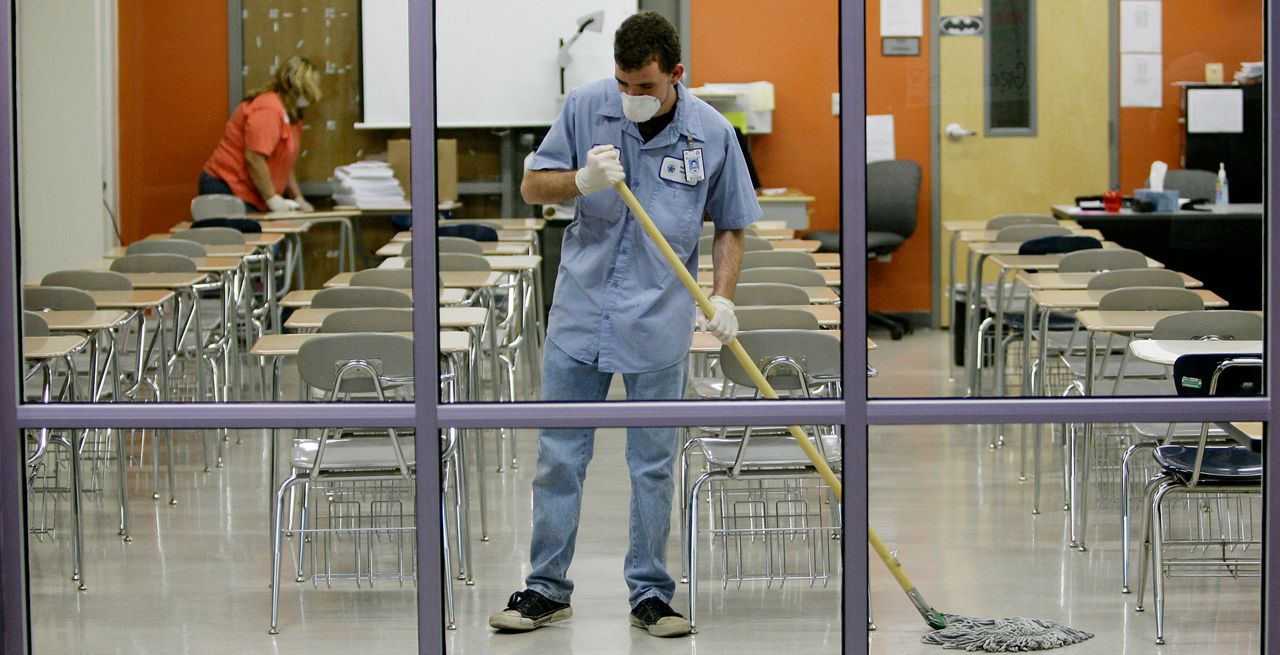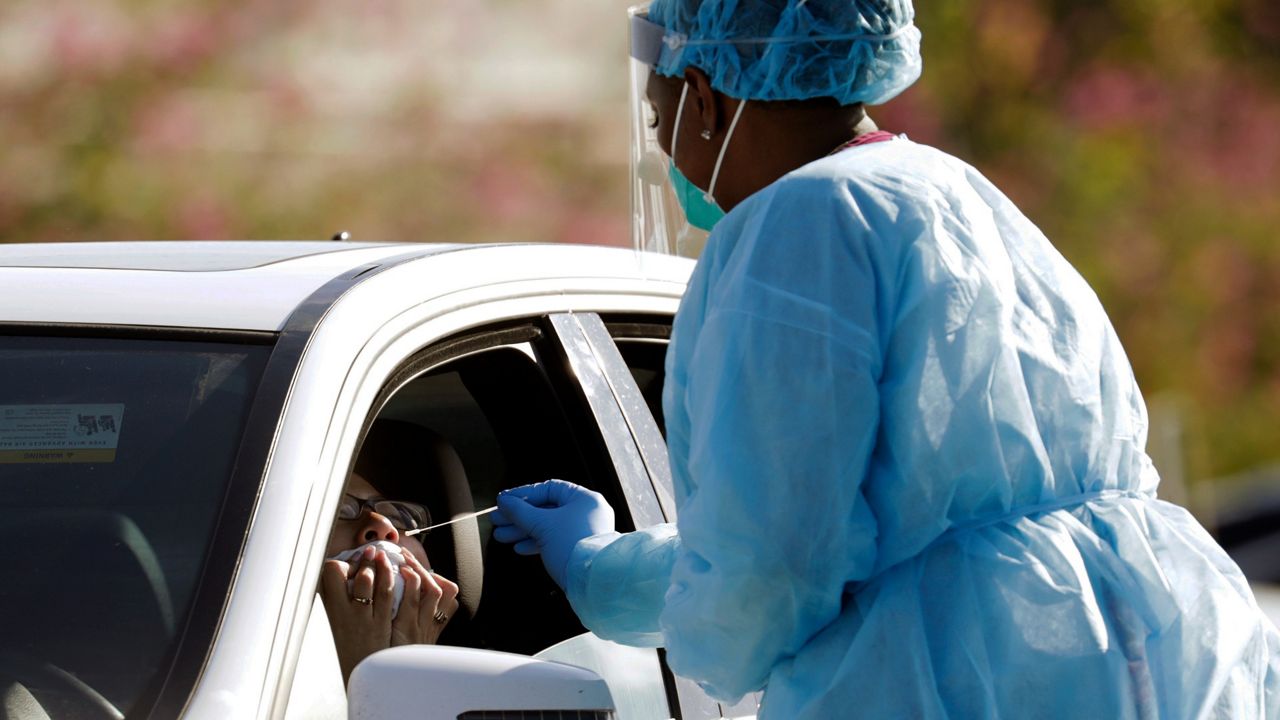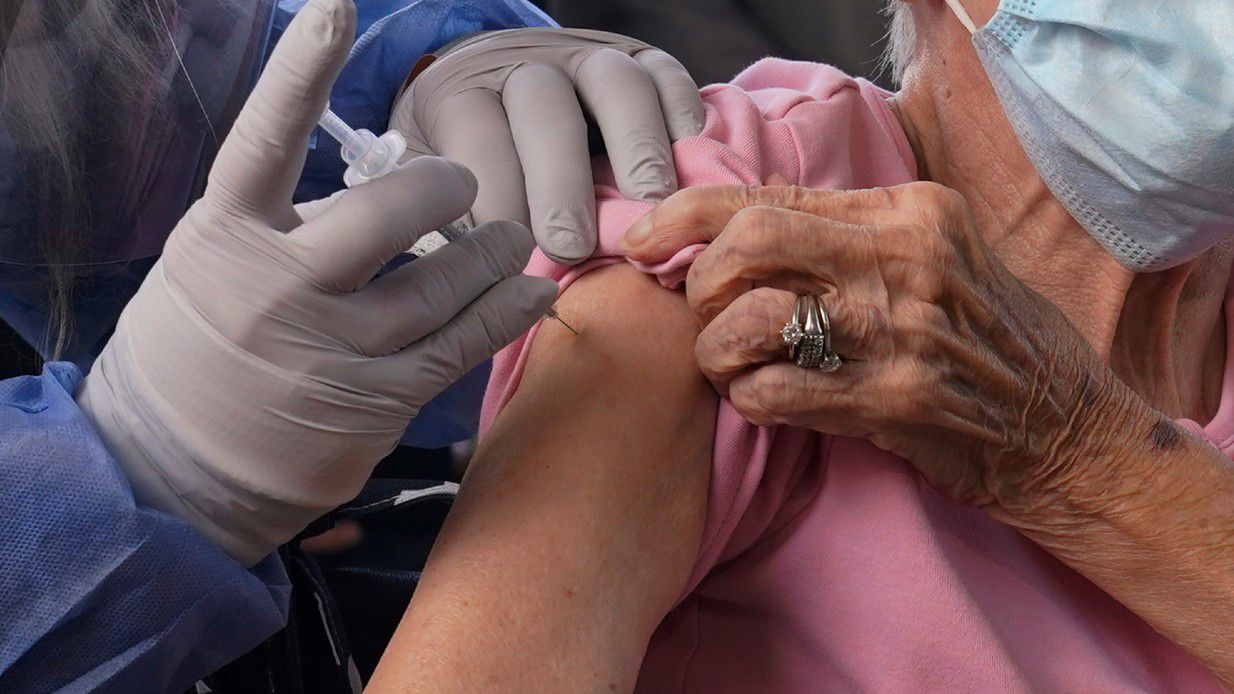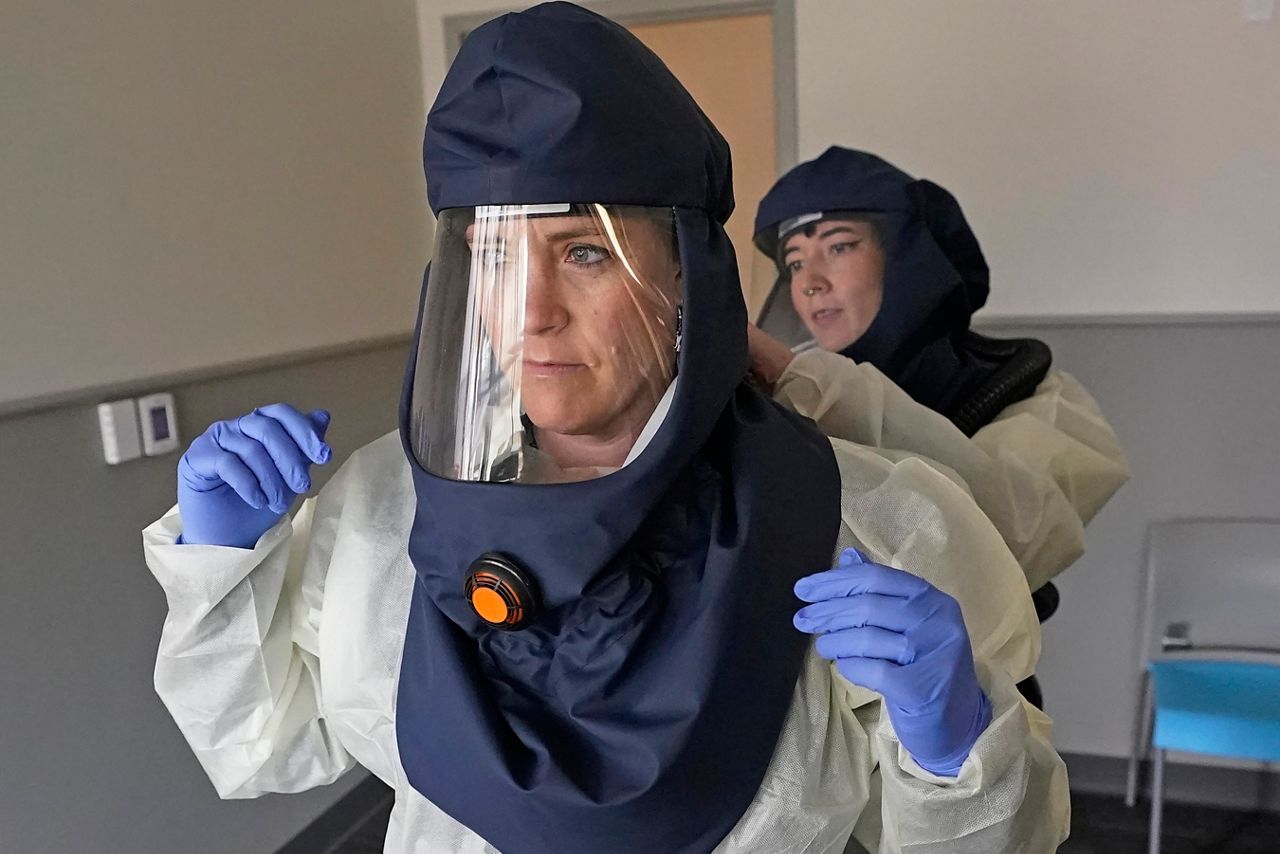MILWAUKEE— COVID-19 is still spreading far and wide through Wisconsin, as the state on Tuesday reported record-high numbers of cases, hospitalizations, and deaths.
Soon, the virus will be joined by another, more familiar public health foe: The seasonal flu. As influenza cases are expected to start ramping up in the coming months, here’s what to know about how the different viruses stack up, and what you can do to stay safe.
Spot the difference
If you start to feel sick, how can you know which virus is at the source? Unfortunately, it’s hard to tell, says UW Health Chief Quality Officer Jeff Pothof.
“What we find is a lot of people will start having symptoms, and they will quickly assume that it's something else. You know, ‘Maybe it's my allergies kicking up a little bit. I think I just got a cold, it's not a big deal,’’ Pothof says. “The truth of the matter is, COVID-19 can present so mildly that even doctors have a hard time differentiating it without a test.”
The symptoms of flu and COVID-19 include a lot of overlap, as the Centers for Disease Control and Prevention lays out: Both viruses can lead a patient to develop a cough or have trouble breathing. They can cause fever, chills, muscle aches, and fatigue. And, in severe cases, they can lead to a range of complications that affect multiple organ systems, from pneumonia to sepsis to cardiac problems.
In both COVID-19 and flu cases, people can be infected — and infect others — before their symptoms show up. But the window between exposure and symptoms may be longer for coronavirus, the CDC reports: COVID-19 symptoms can show up anywhere between two and 14 days after infection, while flu symptoms tend to appear between one and four days after infection.
Loss of smell or taste is one symptom that’s found in cases of COVID-19 but not influenza. Still, not all COVID-19 patients lose their sense of smell, Pothof points out, so just because your sniffer is still working doesn’t mean you are COVID-free.
In the end, getting tested is the only way to be sure about which infection you have, he says.
“It is really pretty much impossible, based on symptoms alone, to determine whether it's influenza, COVID-19, RSV, or there's a couple other upper respiratory viruses,” Pothof says. “When you're looking at any one person, it could really be any of those things. You wouldn't know until you got a test.”
The two infections are caused by different viruses. For COVID-19, it’s the new SARS-CoV-2 virus that gets into the body’s cells and leads you to get sick. For influenza, there are four different viral strains; influenza A and B are the ones that most commonly infect humans, as the American Society for Microbiology explains.
Tests work to track down telltale genetic material or specific proteins on the virus’s surface, determining whether one virus or another is present in your body. Most influenza tests use the same PCR method that’s commonly employed to diagnose COVID-19, so one swab can actually be used to test for both viruses, Pothof says. He expects that more combined tests for both viruses will become available as flu season gets underway.
In the meantime, if you’re feeling under the weather and waiting on test results, it’s essential that you quarantine and avoid contact with others, Pothof says — even if your symptoms aren’t too severe. Considering the level of coronavirus spread in our communities, a good proportion of those who feel sick will, in fact, have COVID-19. And being out and about with a COVID-19 infection is, as Pothof says, “really not a good idea.”
“I know we cheat on the ‘stay home if you’re sick’ rule a lot. We often go to work when we have a little cold. We often send our kids to school when they’re just a little bit under the weather,” he says. “We can’t do that this year.”
A ‘Better Virus’
This year’s extra precautions are important because, even though COVID-19 can share some early symptoms with the flu, our current pandemic is a far cry from the average flu season, Pothof says.
“Outside of symptoms, the diseases are actually a fair bit different,” he says.“Outside of symptoms, the diseases are actually a fair bit different,” he says.
One important distinction: COVID-19 is more contagious than influenza. Scientists measure the infectiousness of a virus using the variable R0, or the basic reproduction number. This number estimates, on average, how many more people will catch the virus from one infected person.
Though the R0 value can change based on circumstances, generally we think COVID-19 has a value around 1.3 to 1.5, Pothof says. Though this is lower than the R0 for highly contagious diseases like measles (which is around 11), it’s greater than the R0 for influenza (which usually hovers below 1).
In the 2019 to 2020 flu season, the Wisconsin Department of Health Services estimates there were 36,175 cases of flu in the state. As of Tuesday, the DHS reported 206,311 Wisconsinites had tested positive for coronavirus — a 470% increase from the flu numbers.
Part of COVID-19’s rapid spread is probably because it is a new virus, Pothof says. Though influenza viruses tend to mutate from year to year, our immune systems can recognize them well enough to put up more of a fight. With COVID-19, though, our body’s defenses are all “completely naive,” he says.
Plus, Pothof says, it seems the SARS-CoV-2 virus is just really good at doing what viruses do: Invading the body and using its resources to make copies of itself. The coronavirus’s signature “spike protein” is one feature that helps it break into human cells.
“COVID-19 is very effective at relatively small concentrations of attaching to our cells, injecting its genetic material, and reproducing,” Pothof says. “It's just, as far as viruses go, a better virus at making us sick.”
In addition to being more contagious, COVID-19 is also much more likely than the flu to cause serious illness or death. The World Health Organization reports that based on data so far, 15% of coronavirus infections are “severe” and require oxygen, while 5% are “critical” and require ventilation. “These fractions of severe and critical infection would be higher than what is observed for influenza infection,” according to the WHO.

A recent CDC study of patients hospitalized at VA facilities also found that coronavirus patients were five times more likely to die than influenza patients.
“This idea that COVID-19 is about as dangerous as the flu, that's really a misnomer,” Pothof says. “It is much more dangerous. There are many more people, when they get COVID-19, getting admitted to the hospital, being on a ventilator, and then ultimately dying than we ever see with influenza.”
Prepping For Virus Season
Officials have sounded the alarm that a “twindemic” of flu and coronavirus could strain health systems, which in Wisconsin are already struggling to keep up with record COVID-19 surges.
The good news is that the measures put in place to stop the spread of COVID-19 also help prevent flu infections, Pothof says. Wearing masks, keeping physical distance, and washing your hands frequently can keep flu cases down.
“By doing these things, not only do you protect yourself and your families and your community from COVID-19, but you also potentially are contributing to an influenza season that might be less severe,” Pothof says.
Health officials have also stressed the importance of getting a flu vaccine, which is available across the state, including at drive-thru clinics.
A new study out of the Netherlands actually found that participants who got their flu shot were less likely to contract COVID-19 — although the study hasn’t been peer-reviewed and shows correlation, not causation. Even if the flu vaccine doesn’t directly protect from COVID-19, though, it can help lighten the load for overburdened health care systems, officials say.
“The fewer serious flu cases we have in Wisconsin, the fewer flu hospitalizations and clinic visits,” DHS Secretary-designee Andrea Palm said at a media briefing last month. “And therefore, the greater capacity they will have to keep fighting COVID-19.”“The fewer serious flu cases we have in Wisconsin, the fewer flu hospitalizations and clinic visits,” DHS Secretary-designee Andrea Palm said at a media briefing last month. “And therefore, the greater capacity they will have to keep fighting COVID-19.”
Unlike the flu, of course, COVID-19 doesn’t yet have a vaccine available. Pothof says he thinks the vaccine trials — including the AstraZeneca study, which is set to restart its U.S. leg at UW Health soon — are moving along at a good pace, but still have a while to go.
For now, he says, we have to buckle down on following public health measures to get the state out of the “rough spot” it’s in now.
“There isn't a new silver bullet, and there isn't a new solution,” Pothof says. “We need people to agree with the science and with the medical experts, that the fastest way to get to normal is, for a period of time, to do what's not normal.”









